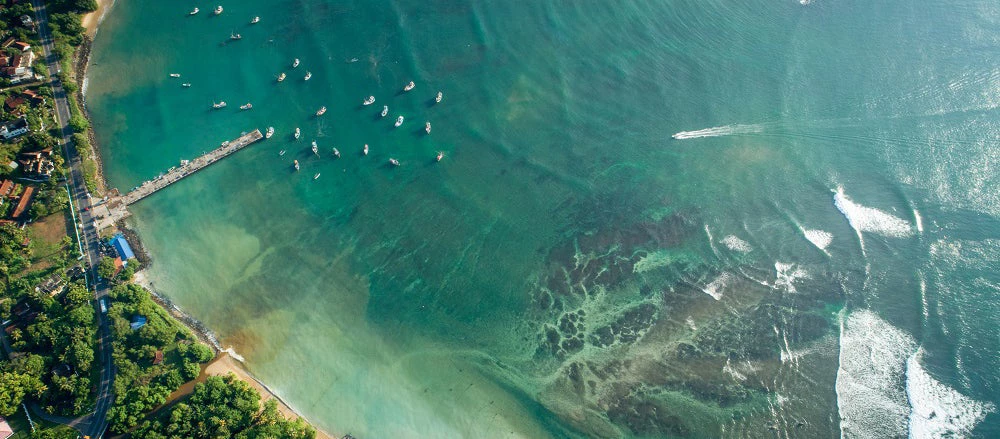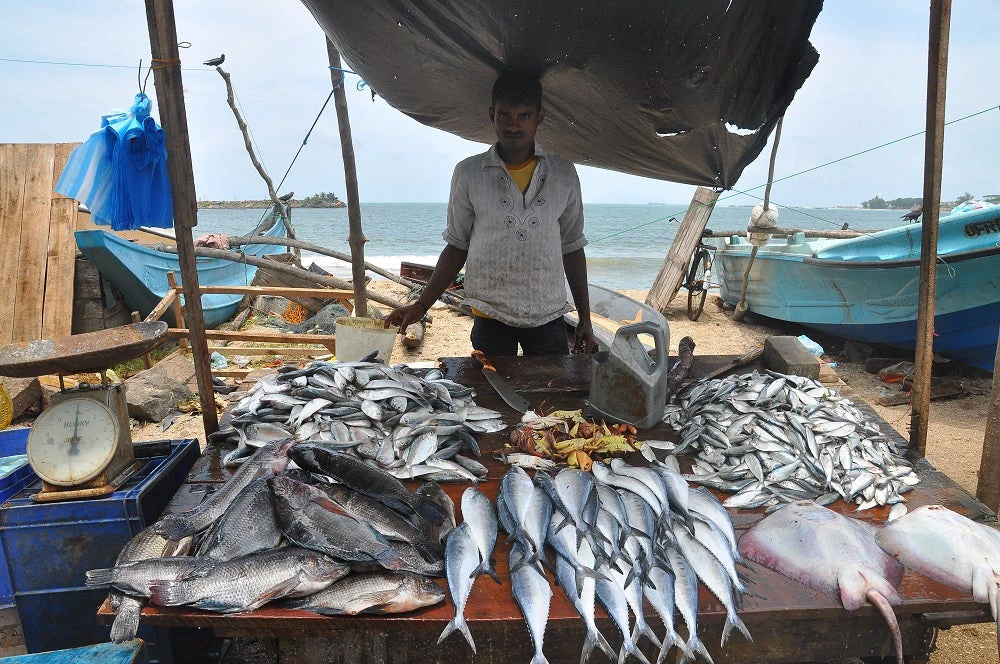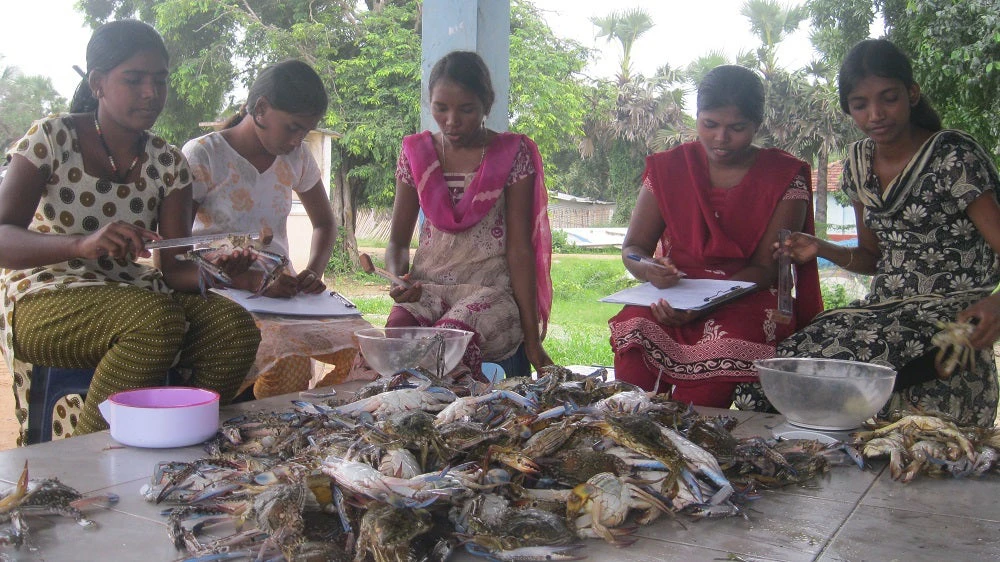 Aerial view of fishing villages in Sri Lankan, Photo: lzf/Shutterstock.com
Aerial view of fishing villages in Sri Lankan, Photo: lzf/Shutterstock.com
In a supermarket in Washington, DC, USA, the seafood section includes a product that comes from far away: blue swimming crab imported from Sri Lanka. The packaging proudly announces that the product is “Committed to Sustainability” and a “Product of Sri Lanka.”
About 9,000 miles away in the island country of Sri Lanka, close to one million people are engaged in the fisheries sector on a full- or part-time basis, including those fishing and processing blue swimming crabs. Fish make up about 50% of Sri Lankans’ animal protein intake, a ratio three times higher than the global average. Thus, sustainable management of Sri Lanka’s fisheries is essential for continued food security and livelihoods, and for providing opportunities for new jobs and exports.
Making the blue swimming crab fishery sustainable
Efforts to sustainably manage Sri Lanka’s blue swimming crabs began in 2013 with the launch of the Blue Swimming Crab Fishery Improvement Project as a joint initiative of the National Fisheries Institute Crab Council, an association of North American crab importers, and the Seafood Exporters’ Association of Sri Lanka. It is being carried out in collaboration with the Ministry of Fisheries and more than 70 small scale fishing communities in four districts. The project aims to improve the biological and ecological status of crab fisheries and their management in the Palk Bay and the Gulf of Mannar (see map) and make them sustainable for the future. A well-managed fishery forms the basis for consistent catches and steady incomes for fishers as well as the many women working along this labor-intensive value chain. Alternatively, overfishing would erode incomes, creating greater vulnerability among Sri Lanka’s coastal fishing communities.
The analysis first assessed the blue swimming crab stock status using an innovative, simple but robust methodology that relies on measuring the length of crabs harvested. The assessment helped determine sustainable catch levels and is repeated periodically to gauge the stock status and adjust catch levels accordingly.
In January 2018, the blue swimming crab fisheries achieved a ‘good alternative’ recommendation from the Monterey Bay Aquarium’s Seafood Watch, a recognition of the progress made towards improved management. This recognition allowed Taprobane Seafood Group, Sri Lanka’s top exporter of pasteurized crab products, to access new, premium markets in the United States for eco-labeled seafood products.
It is noteworthy that at the height of market disruptions induced by the COVID-19 in April-May 2020, Taprobane’s only orders in North America were from premier markets for “sustainably sourced seafood.”
Applying sustainability lessons to other fisheries
The success of the blue swimming crab project led to new questions: Can Sri Lanka adopt a similar approach for other fisheries and seafood products? Can similar projects achieve sustainable resource management and better revenue?
Considering the importance of the sector for Sri Lanka, the World Bank carried out an analysis between 2020 and 2021 with the Sri Lanka Ministry of Fisheries and its agencies, the National Planning Department, fisher and processor organizations, NGOs, and academia.
The study “Priorities for Sustainably Managing Sri Lanka’s Marine Fisheries, Coastal Aquaculture, and the Ecosystems That Support Them” includes an analysis of coastal and multiday fisheries, coastal aquaculture, and coastal ecosystem services that support these fisheries, partly funded by World Bank-administered trust fund, PROBLUE.
The study’s main recommendations for coastal fisheries center around data-based and participatory management. For example, it recommends that the Ministry of Fisheries allocate resources to regular stock assessments, including developing methods for data-poor fisheries, and create sustainable management plans based on these assessments, in close consultation with fishers and other local stakeholders.
These plans should incorporate measures to conserve and, where feasible, restore ecosystems such as coral reefs and mangroves that support the fisheries and increase coastal communities’ resilience to weather events and climate change.
To ensure these plans are implemented, it will be crucial to provide support to diversify the livelihoods of fishers and their families, as well as transmit to fishers part of the sustainability premiums achieved through exports to premium markets.
The World Bank engagement in sustainable fishing in Sri Lanka
The study report will be launched at a public event with high level participation from the Sri Lanka government and the World Bank, which will feature policy and technical discussions. These discussions are an integral part of the exchanges to develop the next Country Partnership Strategy for 2022 - 2026, and will hopefully help Sri Lanka build back better towards a sustainable blue economy.
The authors gratefully acknowledge inputs of Dr. Steve Creech, Project Coordinator to this blog. More information on the project may be found at http://www.pelagikos.lk/.






Join the Conversation